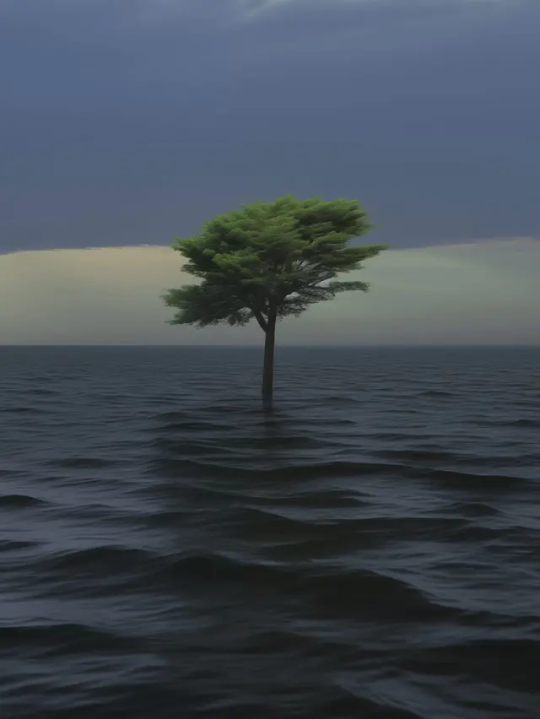#robot:
Explore tagged Tumblr posts
Photo





CJ from Hello World (MSPFA) by phasedsun?
111 notes
·
View notes
Text
Fruit flies could hold the key to building resiliency in autonomous robots - Technology Org
New Post has been published on https://thedigitalinsider.com/fruit-flies-could-hold-the-key-to-building-resiliency-in-autonomous-robots-technology-org/
Fruit flies could hold the key to building resiliency in autonomous robots - Technology Org


Mechanical Engineering Assistant Professor Floris van Breugel has been awarded a $2 million National Science Foundation (NSF) grant to adapt autonomous robots to be as resilient as fruit flies.
Resiliency in autonomous robotic systems is crucial, especially for robotics systems used in disaster response and surveillance, such as drones monitoring wildfires. Unfortunately, modern robots have difficulty responding to new environments or damage to their bodies that might occur during disaster response, van Breugel wrote in his grant application. In contrast, living systems are remarkably adept at quickly adjusting their behavior to new situations thanks to redundancy and flexibility within their sensory and muscle control systems.
Scientific discoveries in fruit flies have helped shed light on how these insects achieve resiliency in flight, according to van Breugel. His project will translate that emerging knowledge on insect neuroscience to develop more resilient robotic systems.
“This is a highly competitive award on a topic with tremendous potential impact, which also speaks of the research excellence of the investigator and Mechanical Engineering at UNR,” Petros Voulgaris, Mechanical Engineering department chair, said.
This research aligns with the College of Engineering’s Unmanned Vehicles research pillar.
Engineering + flies
The intersection of engineering and flies long has been an interest to van Breugel.
“As an undergrad, I did research where my main project was designing a flying, hovering thing that birds or insects vaguely inspired,” he said. “Throughout that project, I realized that the hard part, which was more interesting to me, is once you have this mechanical thing that can fly, how do you control it? How do you make it go where you want it to go? If it gets broken, how do you adapt to that?”
Van Breugel says he is examining how “animals can repurpose or reprogram their sensorimotor systems ‘on the fly’ to compensate for internal damage or external perturbations quickly.”
Working with van Breugel on the grant are experts in insect neuroscience, including Michael Dickinson, professor of bioengineering and aeronautics at the California Institute of Technology (and van Breugel’s Ph.D. advisor) as well as Yvette Fisher, assistant professor of neurobiology at U.C. Berkeley. Both have pioneered aspects of brain imaging in flies in regards to the discoveries and technology in the field that van Breugel is utilizing in this research project. Also on the project: Bing Bruton, associate professor of biology at the University of Washington, who brings her expertise in computational neuroscience.
The importance of flies in the realm of both engineering and neuroscience stems from the combination of their sophisticated behavior together with brains that are numerically simple enough that they can be studied in detail. This “goldilocks” combination, van Bruegel said, makes it feasible to distill properties of their neural processing into fundamental engineering principles that can be applied to robotics systems.
As part of the grant, research experiences will be offered to middle school, high school and undergraduate students to participate in both neuroscience and robotics research. Van Breugel and his team also will develop open-source content to help bring neuroscience fluency to engineering students. This aligns with the College of Engineering’s Student Engagement operational pillar.
Source: University of Nevada, Reno
You can offer your link to a page which is relevant to the topic of this post.
#A.I. & Neural Networks news#Animals#autonomous robots#Behavior#bing#Biology#birds#Brain#brains#Building#control systems#Disaster response#Discoveries#drones#engineering#flight#Foundation#fruit flies#Fundamental#how#Imaging#insects#it#Light#Link#Mechanical engineering#monitoring#muscle#neurobiology#Neuroscience
3 notes
·
View notes
Text
Software Development for Autonomous Vehicles
Steering Toward the Future:
Table of Contents- Steering Toward the Future: - The Building Blocks: Key Software Components - Overcoming Roadblocks: Challenges in Autonomous Vehicle Software Development - Driving Innovation: Benefits of Autonomous Vehicle Software - Pylogix: Partnering with You on the Road Ahead - Conclusion: The Road Less Traveled, A Future Brighter The automotive industry is undergoing a radical transformation, driven by the promise of self-driving cars. This technological revolution relies heavily on sophisticated software development, making it a critical area of focus for companies like Pylogix. This article will delve into the world of autonomous vehicle software, exploring its key components, the challenges involved in its development, and the exciting opportunities it presents for shaping the future of mobility. The Building Blocks: Key Software Components Autonomous vehicles are essentially intricate systems of interconnected software modules that work in concert to perceive their surroundings, make decisions, and execute actions. Here's a breakdown of some key components: Perception: This layer involves processing data from various sensors like cameras, lidar, radar, and ultrasonic sensors to create a comprehensive understanding of the vehicle's environment. Machine learning algorithms play a crucial role in identifying objects, estimating distances, and predicting trajectories. Localization: Autonomous vehicles need to know precisely where they are on the map at all times. Localization software utilizes GPS data, inertial measurement units (IMUs), and sensor fusion techniques to determine the vehicle's position with high accuracy. Path planning & decision making: This component is responsible for determining the safest and most efficient route to the destination. It involves analyzing real-time sensor data, traffic conditions, and road rules to make informed decisions about lane changes, speed adjustments, and obstacle avoidance. Control: Once a path is planned, the control software translates high-level commands into precise instructions for steering, acceleration, braking, and other vehicle functions. This layer often leverages PID controllers, model predictive control, or reinforcement learning techniques to ensure smooth and responsive driving behavior. Overcoming Roadblocks: Challenges in Autonomous Vehicle Software Development Developing software for autonomous vehicles is a complex and challenging endeavor. Some key hurdles include: Data Complexity: Processing the massive amounts of data generated by multiple sensors in real time requires significant computational power and sophisticated algorithms. Safety Criticality: Autonomous vehicle software must be incredibly reliable and robust, as even minor errors can have severe consequences. Extensive testing and validation are essential to ensure safety. Ethical Considerations: Decision-making algorithms in autonomous vehicles will inevitably face ethical dilemmas. Addressing these issues requires interdisciplinary collaboration involving ethicists, legal experts, and engineers. Regulatory Landscape: The regulatory framework for autonomous vehicles is still evolving, posing a challenge for developers who need to comply with constantly changing standards and guidelines. Driving Innovation: Benefits of Autonomous Vehicle Software Despite the challenges, the development of autonomous vehicle software offers numerous benefits, including: | Benefit | Description | |------------------------|:--------------------------------------------------------------| | Enhanced Safety | Reduced human error, leading to fewer accidents. | | Increased Efficiency | Optimized routes and reduced congestion. | | Improved Accessibility | Mobility for people with disabilities or limited driving capabilities.| Pylogix: Partnering with You on the Road Ahead Pylogix is committed to pushing the boundaries of autonomous vehicle software development through: Expertise in Machine Learning & Computer Vision: Our team of experienced engineers leverages cutting-edge algorithms and techniques to develop robust perception and decision-making systems. Focus on Safety & Reliability: We adhere to rigorous testing and validation practices to ensure the highest level of safety for autonomous vehicles. Pylogix is more than just a software development company; we are your partners in building the future of mobility. Contact us today to explore how our expertise can help you navigate the exciting world of autonomous vehicle software. Conclusion: The Road Less Traveled, A Future Brighter Autonomous vehicles promise to revolutionize transportation by making it safer, more efficient, and accessible. This transformation relies heavily on innovative software development, an area where Pylogix is poised to make a significant impact. By tackling the challenges and embracing the opportunities, we can help pave the way toward a future where self-driving cars are no longer a dream but a reality. Read the full article
#ADAS(AdvancedDriverAssistanceSystems)#ArtificialIntelligence#AutonomousVehicles#ComputerVision#MachineLearning#MotionControl#PathPlanning#Robotics#Self-DrivingCars#SensorFusion#SoftwareEngineering#VehicleSafety
1 note
·
View note
Photo

How Concerned Citizens Drove a Neo-Nazi Out of Rural Maine
Christopher Pohlhaus planned to build a fascist training compound in the woods of rural Maine. The local journalists, veterans, lumberjacks, and policymakers weren't having it.
Pohlhaus, 37, is a former U.S. marine, an itinerant tattoo artist, and a hardcore white-supremacist influencer. He is loud and hostile, and proud to be both. His voice is pitched surprisingly high, and he has a slight Southern drawl. He has a large body and small bald head; a blue-black tattoo crawls up the right side of his face, from his chin to his forehead. Over the years, Pohlhaus has collected thousands of social media followers, who know him by his nickname: Hammer.
Hammer had been living in Texas for a few years when, in March 2022, he bought the land in Maine. He told his followers that he was going to use it to build a haven, operational center, and training ground for white supremacists.
Check out our excerpt of The Atavist’s latest blockbuster story.
1K notes
·
View notes
Photo

PORTO ROCHA
884 notes
·
View notes
Photo

🧀🥪🌶️🥭 The Ravening War portraits 🧀🥪🌶️🥭
patreon * twitch * shop
[ID: a series of digitally illustrated portraits showing - top left to bottom right - Bishop Raphaniel Charlock (an old radish man with a big red head and large white eyebrows & a scraggly beard. he wears green and gold robes with symbols of the bulb and he smirks at the viewer) Karna Solara (a skinny young chili pepper woman with wavy green hair, freckled light green skin with red blooms on her cheeks. she wears a chili pepper hood lined with small pepper seeds and stares cagily ahead) Thane Delissandro Katzon (a muscular young beef man with bright pinkish skin with small skin variations to resemble pastrami and dark burgundy hair. he wears a bread headress with a swirl of rye covering his ears and he looks ahead, optimistic and determined) Queen Amangeaux Epicée du Peche (a bright mango woman with orange skin, big red hair adorned with a green laurel, and sparkling green/gold makeup. she wears large gold hoop earrings and a high leafy collar) and Colin Provolone (a scraggly cheese man with waxy yellow skin and dark slicked back hair and patchy dark facial hair. he wears a muted, ratty blue bandana around his neck and raises a scarred brow at the viewer with a smirk) End ID.)
#trw#the ravening war#dimension 20#acoc#trw fanart#ttrpg#dnd#bishop raphaniel charlock#karna solara#thane delissandro katzon#queen amangeaux epicee du peche#colin provolone
2K notes
·
View notes
Photo

One of my favorites by Paul Lehr, used as a 1971 cover to "Earth Abides," by George R. Stewart. It's also in my upcoming art book!
1K notes
·
View notes
Quote
もともとは10年ほど前にTumblrにすごくハマっていて。いろんな人をフォローしたらかっこいい写真や色が洪水のように出てきて、もう自分で絵を描かなくて良いじゃん、ってなったんです。それで何年も画像を集めていって、そこで集まった色のイメージやモチーフ、レンズの距離感など画面構成を抽象化して、いまの感覚にアウトプットしています。画像の持つ情報量というものが作品の影響になっていますね。
映画『きみの色』山田尚子監督×はくいきしろい対談。嫉妬し合うふたりが語る、色と光の表現|Tokyo Art Beat
150 notes
·
View notes
Photo










#thistension
XO, KITTY — 1.09 “SNAFU”
#xokittyedit#tatbilbedit#kdramaedit#netflixedit#wlwedit#xokittydaily#asiancentral#cinemapix#cinematv#filmtvcentral#pocfiction#smallscreensource#teendramaedit#wlwgif#kitty song covey#yuri han#xo kitty#anna cathcart#gia kim#~#inspiration: romantic.#dynamic: ff.
1K notes
·
View notes
Photo



No one wants to be here and no one wants to leave, Dave Smith (because)
109 notes
·
View notes
Photo

Noodles with Lamb Sauce (Laghman, 新疆拌面) Xinjiang laghman features chewy noodles served with a bold and rich lamb and tomato sauce that is bursting with flavor.
Recipe: https://omnivorescookbook.com/recipes/uyghur-style-noodles-with-lamb-sauce
122 notes
·
View notes
Text
Autonomous synthesis robot uses AI to speed up chemical discovery - Technology Org
New Post has been published on https://thedigitalinsider.com/autonomous-synthesis-robot-uses-ai-to-speed-up-chemical-discovery-technology-org/
Autonomous synthesis robot uses AI to speed up chemical discovery - Technology Org
Chemists of the University of Amsterdam (UvA) have developed an autonomous chemical synthesis robot with an integrated AI-driven machine learning unit. Dubbed ‘RoboChem’, the benchtop device can outperform a human chemist in terms of speed and accuracy while also displaying a high level of ingenuity. As the first of its kind, it could significantly accelerate the chemical discovery of molecules for pharmaceutical and many other applications. RoboChem’s first results were published in the journal Science.
RoboChem explores chemical reactions in a flow system that includes a LED-powered photochemical reactor. Image credit: UvA/HIMS.
RoboChem was developed by the group of Prof. Timothy Noël at the UvA’s Van ‘t Hoff Institute for Molecular Sciences. Their paper shows that RoboChem is a precise and reliable chemist that can perform a variety of reactions while producing minimal amounts of waste. Working autonomously around the clock, the system delivers results quickly and tirelessly. Noël: ‘In a week, we can optimise the synthesis of about ten to twenty molecules. This would take a PhD student several months.’ The robot not only yields the best reaction conditions, but also provides the settings for scale-up. ‘This means we can produce quantities that are directly relevant for suppliers to the pharmaceutical industry, for example.’
RoboChem’s ‘brain’
The expertise of the Noël group is in flow chemistry, a novel way of performing chemistry where a system of small, flexible tubes replaces beakers, flasks and other traditional chemistry tools. In RoboChem, a robotic needle carefully collects starting materials and mixes these together in small volumes of just over half a millilitre. These then flow through the tubing system towards the reactor. There, the light from powerful LEDs triggers the molecular conversion by activating a photocatalyst included in the reaction mixture. The flow then continues towards an automated NMR spectrometer that identifies the transformed molecules. These data are fed back in real-time to the computer that controls RoboChem. ‘This is the brain behind RoboChem,’ says Noël. ‘It processes the information using artificial intelligence. We use a machine learning algorithm that autonomously determines which reactions to perform. It always aims for the optimal outcome and constantly refines its understanding of the chemistry.’
Impressive ingenuity
The group put a lot of effort into substantiating RoboChem’s results. All of the molecules now included in the Science paper were isolated and checked manually. Noël says the system has impressed him with its ingenuity: ‘I have been working on photocatalysis for more than a decade now. Still, RoboChem has shown results that I would not have been able to predict. For instance, it has identified reactions that require only very little light. At times I had to scratch my head to fathom what it had done. You then wonder: would we have done it the same way? In retrospect, you see RoboChem’s logic. But I doubt if we would have obtained the same results ourselves. Or not as quickly, at least.’
The researchers also used RoboChem to replicate previous research published in four randomly selected papers. They then determined whether Robochem produced the same – or better – results. ‘In about 80% of the cases, the system produced better yields. For the other 20%, the results were similar,’ Noël says. ‘This leaves me with no doubt that an AI-assisted approach will be beneficial to chemical discovery in the broadest possible sense.’
Breakthroughs in chemistry using AI
According to Noël, the relevance of RoboChem and other ‘computerised’ chemistry also lies in the generation of high-quality data, which will benefit the future use of AI. ‘In traditional chemical discovery only a few molecules are thoroughly researched. Results are then extrapolated to seemingly similar molecules. RoboChem produces a complete and comprehensive dataset where all relevant parameters are obtained for each individual molecule. That provides much more insight.’
Overview of the RoboChem system and its main components. Image credit: UvA/HIMS.
Another feature is that the system also records ‘negative’ data. In current scientific practice, most published data only reflects successful experiments. ‘A failed experiment also provides relevant data,’ says Noël. ‘But this can only be found in the researchers’ handwritten lab notes. These are not published and thus unavailable for AI-powered chemistry. RoboChem will change that, too. I have no doubt that if you want to make breakthroughs in chemistry with AI, you will need these kinds of robots.’
Source: University of Amsterdam
You can offer your link to a page which is relevant to the topic of this post.
#A.I. & Neural Networks news#ai#AI-powered#algorithm#applications#approach#artificial#Artificial Intelligence#artificial intelligence (AI)#autonomous robots#Brain#change#chemical#chemical reactions#chemical synthesis#chemistry#comprehensive#computer#data#Future#human#Industry#InSight#intelligence#it#learning#LED#Light#Link#logic
0 notes
Quote
よく「発明は1人でできる。製品化には10人かかる。量産化には100人かかる」とも言われますが、実際に、私はネオジム磁石を1人で発明しました。製品化、量産化については住友特殊金属の仲間たちと一緒に、短期間のうちに成功させました。82年に発明し、83年から生産が始まったのですから、非常に早いです。そしてネオジム磁石は、ハードディスクのVCM(ボイスコイルモーター)の部品などの電子機器を主な用途として大歓迎を受け、生産量も���々倍増して、2000年には世界で1万トンを超えました。
世界最強「ネオジム磁石はこうして見つけた」(佐川眞人 氏 / インターメタリックス株式会社 代表取締役社長) | Science Portal - 科学技術の最新情報サイト「サイエンスポータル」
81 notes
·
View notes
Photo

PORTO ROCHA
522 notes
·
View notes
Photo

HRH The Princess of Wales in Southport today, on her first engagement since completing chemotherapy. It’s so good to see her!❤️ --
#catherine elizabeth#princess catherine#princess of wales#princess catherine of wales#catherine the princess of wales#william arthur philip louis#prince william#prince of wales#prince william of wales#william the prince of wales#prince and princess of wales#william and catherine#kensington palace
113 notes
·
View notes